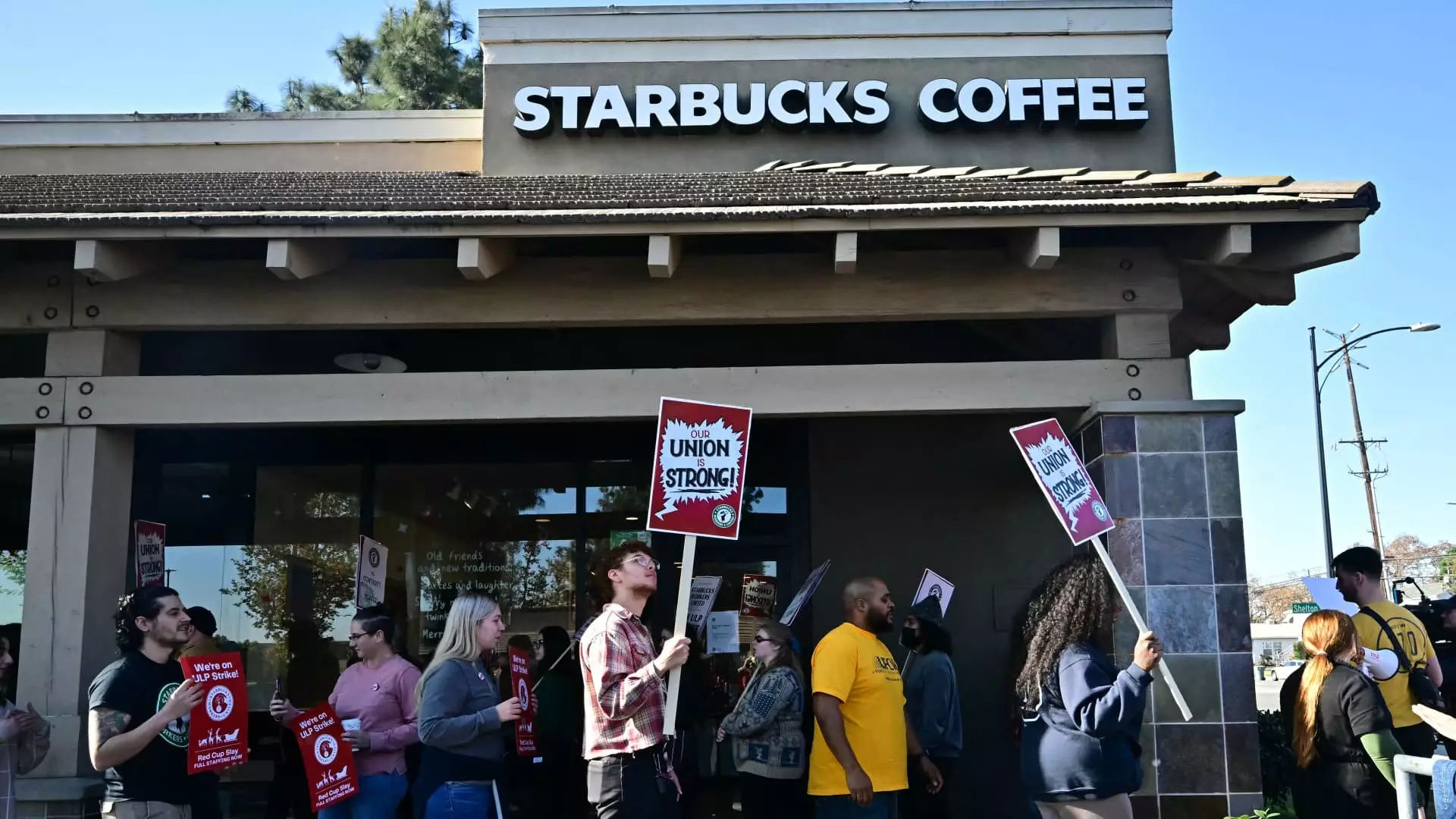The recent wave of strikes among Starbucks baristas has emerged as a significant labor movement across the United States, involving around 5,000 workers in more than 300 stores spanning 45 states. This stirring action unfolds as Starbucks enters its lucrative holiday season, a period critical for the company’s bottom line. While the striking workers represent only a small fraction—approximately 3%—of the total Starbucks locations in the U.S., the scale of the protest marks a noteworthy escalation from the initial strikes that began in just three cities the previous week.
Organized by the Service Employees International Union and Starbucks Workers United, the strike is rooted in claims of unfair labor practices and stalled contract negotiations. The baristas are advocating for a substantial increase in their minimum hourly wage, aiming for a staggering 64% rise immediately, with a total request of 77% over the span of a three-year agreement. This situation reflects a broader trend within the U.S. labor force where workers in various sectors are increasingly demanding fair compensation and better working conditions.
Prominent figures within the movement, such as Lynne Fox, president of the Workers Union, have articulated the frustrations of the baristas. Fox’s statement underscores a deep-seated resentment towards the company’s failure to acknowledge the hard work and dedication of its partners. The assertion that baristas “know their value” signals a collective stand against what they perceive as underappreciation and inadequate compensation for their services. The clarity and resolve expressed by the workers highlight a generational shift in the workplace where employees are less willing to accept non-competitive wages.
In response to the strike, Starbucks has positioned itself defensively, claiming the union’s demands are unrealistic and unsustainable. Company executives emphasize an existing benefits package that they argue adequately compensates employees, asserting that individuals who work at least 20 hours a week effectively earn an average of $30 per hour when considering both pay and benefits. However, such statements may not resonate with the workers whose demands stem from a perception of insufficient immediate wage increases.
The labor dispute comes at a time of leadership transition for Starbucks, following the recruitment of Chipotle CEO Brian Niccol to helm the coffee giant. Niccol’s previous experiences with labor negotiations add another layer of complexity to the ongoing dialogue. His commitment to engaging in good faith negotiations with the union may signal a potential turning point in the conversations surrounding the strike, especially considering his history of settlements with workers regarding labor practices.
As the Starbucks strike unfolds, it encapsulates a broader movement within labor rights in the country, reflecting growing frustrations over wage stagnation and workplace conditions. This tension between corporate practices and employee demands will likely shape the future landscape of negotiations in not just Starbucks but across the retail sector. The outcome of this strike and ensuing negotiations may serve as a precedent for other companies as workers across industries increasingly seek to secure their rights and fortify their positions within the labor market.


Leave a Reply